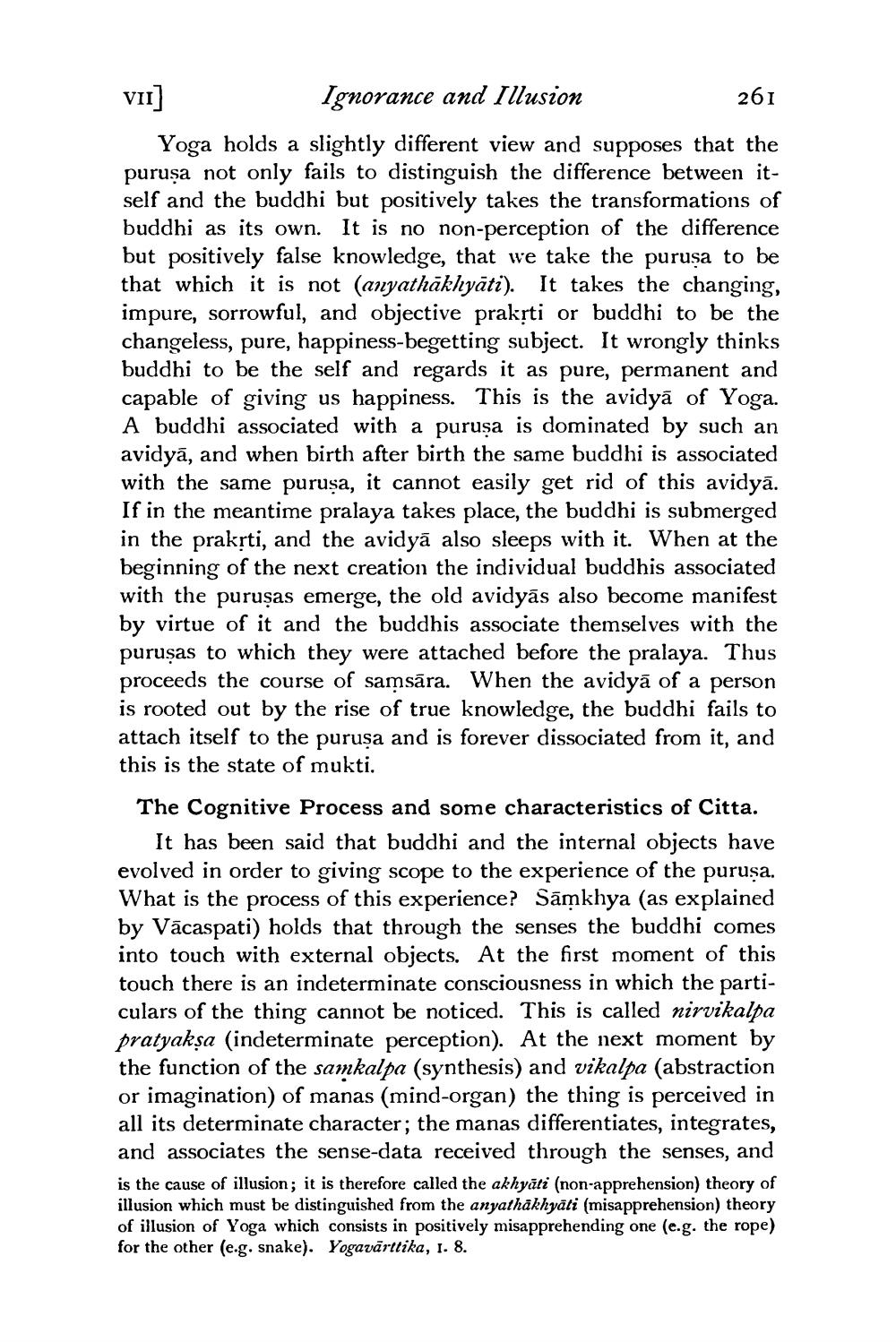________________
VII] Ignorance and Illusion
261 Yoga holds a slightly different view and supposes that the purusa not only fails to distinguish the difference between itself and the buddhi but positively takes the transformations of buddhi as its own. It is no non-perception of the difference but positively false knowledge, that we take the purusa to be that which it is not (anyathākhyāti). It takes the changing, impure, sorrowful, and objective praksti or buddhi to be the changeless, pure, happiness-begetting subject. It wrongly thinks buddhi to be the self and regards it as pure, permanent and capable of giving us happiness. This is the avidyā of Yoga. A buddhi associated with a purusa is dominated by such an avidyā, and when birth after birth the same buddhi is associated with the same purusa, it cannot easily get rid of this avidyā. If in the meantime pralaya takes place, the buddhi is submerged in the prakrti, and the avidyā also sleeps with it. When at the beginning of the next creation the individual buddhis associated with the puruṣas emerge, the old avidyās also become manifest by virtue of it and the buddhis associate themselves with the puruşas to which they were attached before the pralaya. Thus proceeds the course of samsāra. When the avidyā of a person is rooted out by the rise of true knowledge, the buddhi fails to attach itself to the purusa and is forever dissociated from it, and this is the state of mukti.
The Cognitive Process and some characteristics of Citta.
It has been said that buddhi and the internal objects have evolved in order to giving scope to the experience of the purusa. What is the process of this experience? Sāmkhya (as explained by Vācaspati) holds that through the senses the buddhi comes into touch with external objects. At the first moment of this touch there is an indeterminate consciousness in which the particulars of the thing cannot be noticed. This is called nirvikalpa pratyaksa (indeterminate perception). At the next moment by the function of the samkalpa (synthesis) and vikalpa (abstraction or imagination) of manas (mind-organ) the thing is perceived in all its determinate character; the manas differentiates, integrates, and associates the sense-data received through the senses, and is the cause of illusion; it is therefore called the akhyāti (non-apprehension) theory of illusion which must be distinguished from the anyathākhyāti (misapprehension) theory of illusion of Yoga which consists in positively misapprehending one (e.g. the rope) for the other (e.g. snake). Yogavārtlika, 1. 8.




